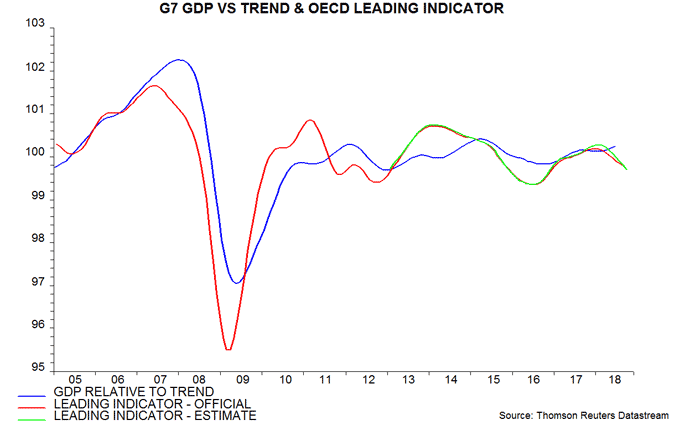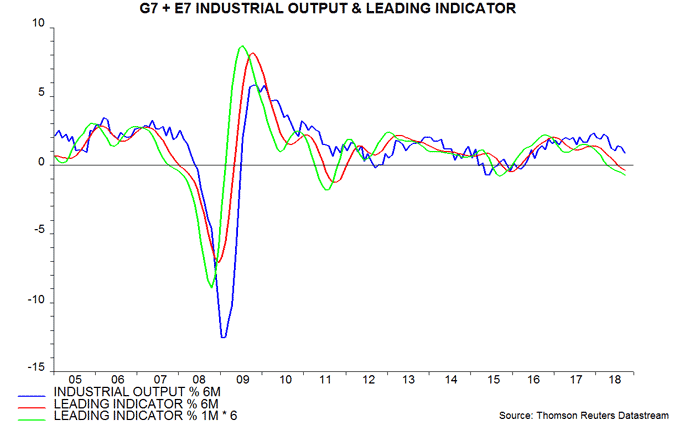
Janus Henderson: Further slowdown expected
Global monetary trends suggest that industrial output momentum will fall further into late 2018, stabilising at a weak level in early 2019 – see previous post. Shorter-term leading indicators are consistent with the forecast of a continued slowdown but have yet to signal a stabilisation.
16.11.2018 | 14:07 Uhr
The forecasting approach here seeks confirmation for monetary signals from a global leading indicator based on the OECD’s country leading indicators*. This indicator typically leads industrial output by four to five months at momentum turning points, compared with about nine months for monetary trends.
The OECD will release September data for its leading indicators on 12 November but most of the component information is already available, allowing an independent calculation.
The OECD presents its indicators in trend-adjusted form, so a rise (fall) signals above (below) trend economic growth. The G7 leading indicator is estimated to have declined further in September, i.e. it continues to suggest below-par economic expansion – see first chart.

The rate of decline of the indicator, moreover, has been increasing, consistent with a widening growth shortfall relative to trend.
The global leading indicator calculated here combines data for the G7 and seven large emerging economies and is designed to predict the direction of economic momentum, rather than whether growth is above or below trend. Six- and one-month rates of change of the indicator continued to decline in September, suggesting a further fall in output momentum into early 2019 – second chart.

Assuming that the monetary forecast of a stabilisation of economic momentum in early 2019 is correct, the indicator rates of change should be at or near a low. Until this is confirmed, or monetary trends rebound, a negative view of prospects remains warranted.
*The global leading indicator incorporates the alternative Chinese leading indicator described in a previous post, rather than the OECD’s version.




Diesen Beitrag teilen: